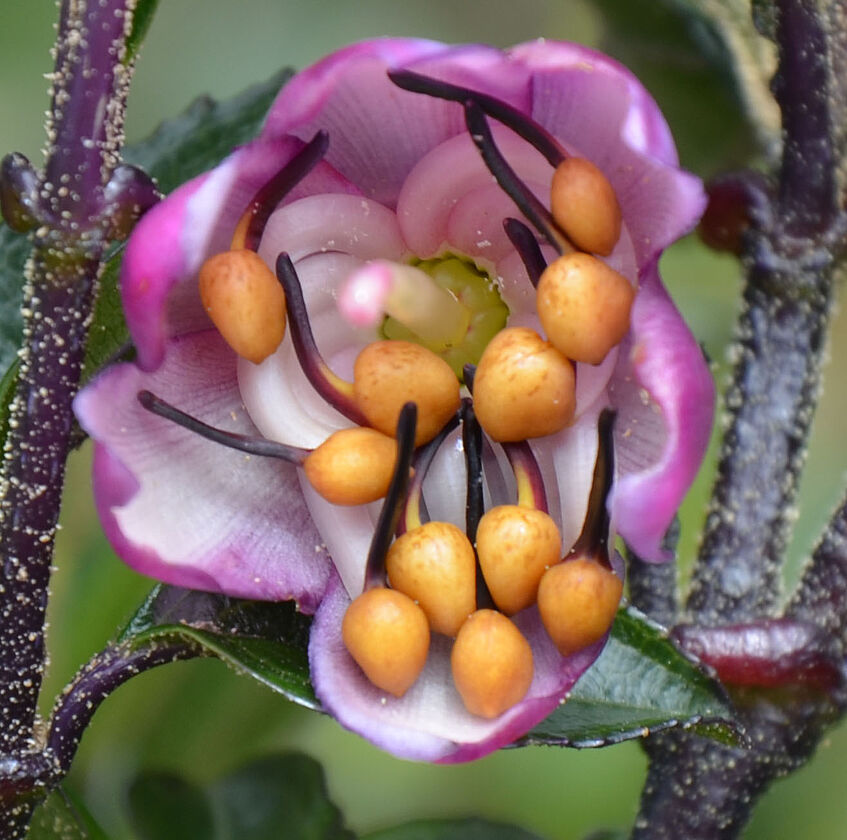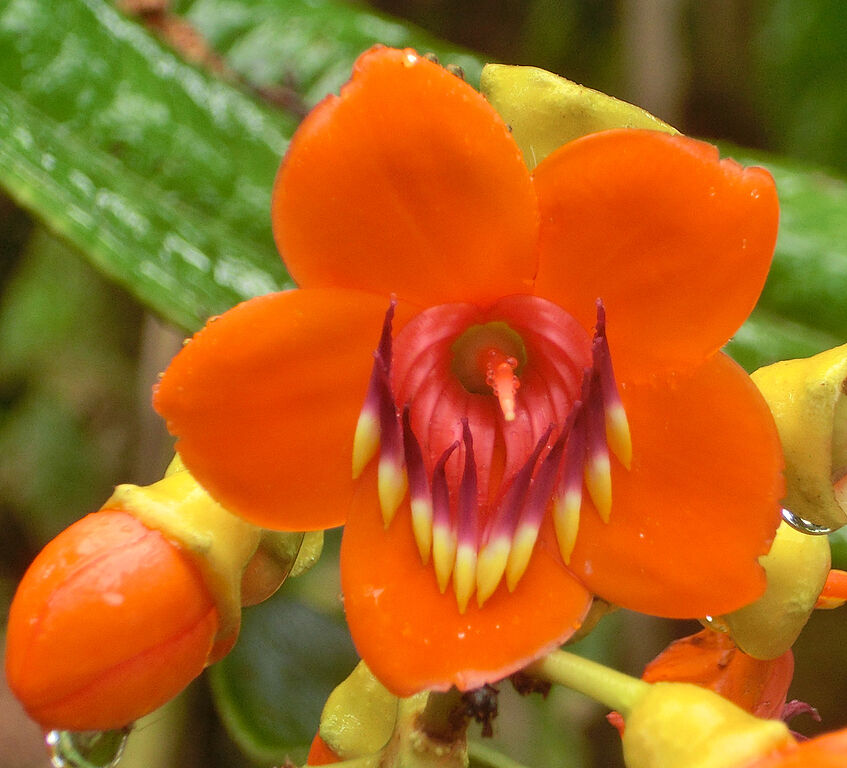Pollinator shifts and floral Evolution in the Merianieae (Melastomataceae)
- FWF-Projekt P 30669-B29
- 10/2017–9/2021
- Projektleiter: Univ.-Prof. Dr. Jürg Schönenberger
- Mitarbeiter: Agnes Dellinger, MSc PhD
Lea Pöllabauer
Katharina Kagerl, BSc MSc
Lic. Valverde-Espinoza José Miguel, BSc - Kooperationen: Ass. Prof. Darin Penneys (University of North Carolina, USA)
Ass. Prof. Ovidiu Paun (Universität Wien)

tangarbestäubte Axinaea affinis

Bienenbestäubte Meriania hernandoi
The tremendous diversity of angiosperm flowers has most likely evolved primarily in connection with their manifold pollinators. A particularly interesting topic located at the interface of pollination ecology and floral evolution is the occurrence of so-called pollinator shifts, i.e., the shift from one functional group of pollinators to another (e.g., from bees to birds). This project focuses on a group of Central- and South American plants (the tribe Merianieae) belonging to the melastome family (Melastomataceae). The Merianieae include bee-, bat-, hummingbird- as well as passerine pollinated species. Using high resolution x-ray computed tomography combined with geometric morphometrics, we aim at analyzing in detail the differences in floral traits associated with different functional groups of pollinators. In addition, using a population genetic approach, we will assess gene flow and pollination efficiency in the different pollination systems.
Medienbeiträge
- scilog-Artikel des Österreichischen Wissenschaftsfonds (FWF):
Wie Tropenpflanzen zu ihren Bestäubern finden – 18. Oktober 2023 - Online-Artikel im Medienportal der Universität Wien:
"How flowers adapt to their pollinators" – 5. Dezember 2019
